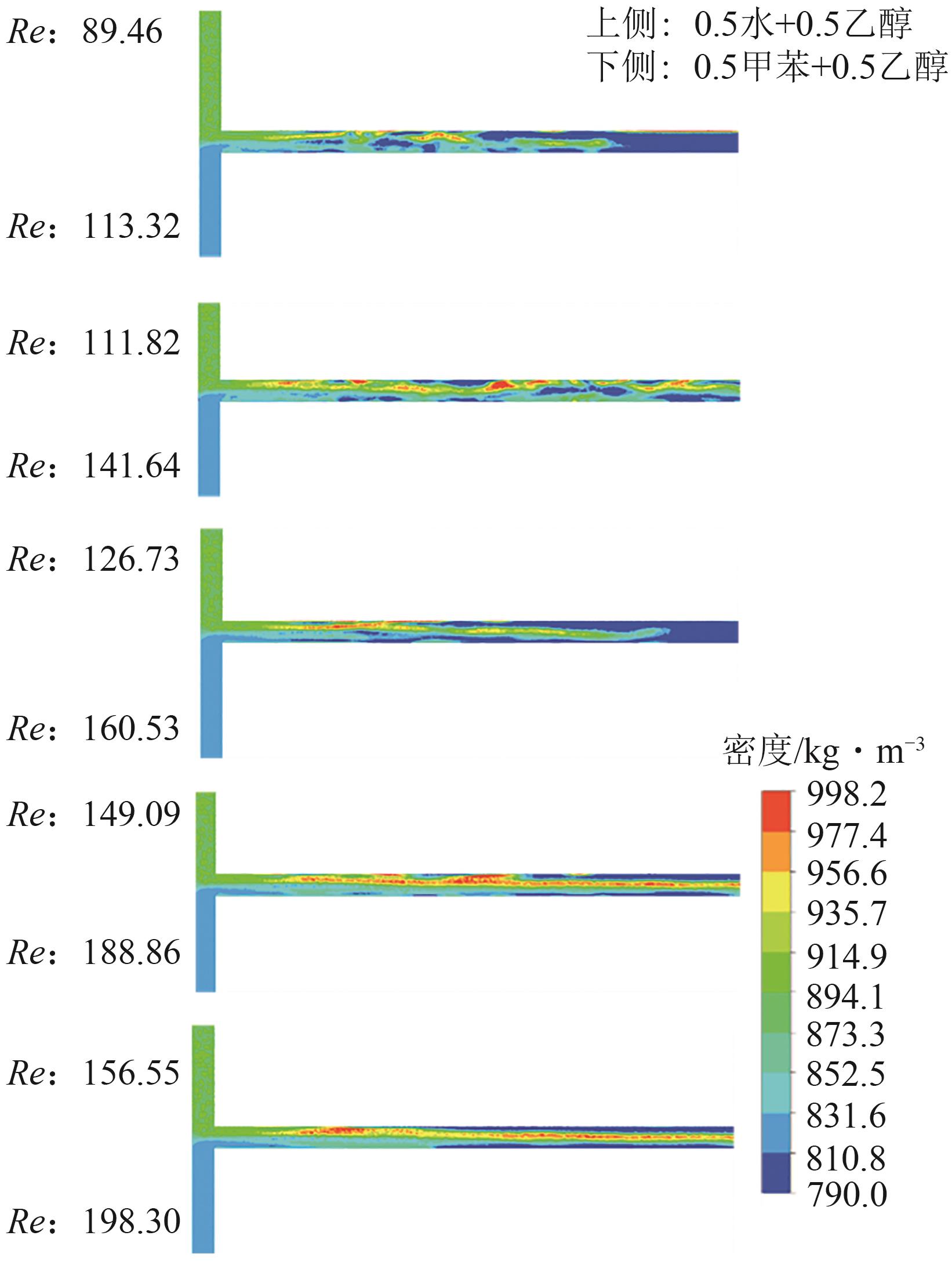| 1 |
杨振宇, 陈广宇. 国内外复合驱技术研究现状及发展方向[J]. 大庆石油地质与开发, 2004(5): 94-96, 125.
|
|
YANG Zhenyu, CHEN Guangyu. Current status and prospect of combination flooding at home and abroad[J]. Petroleum Geology & Oilfield Development in Daqing, 2004(5): 94-96, 125.
|
| 2 |
陈光文, 袁权. 微化工技术[J]. 化工学报, 2003, 54(4): 427-439.
|
|
CHEN Guangwen, YUAN Quan. Micro-chemical technology[J]. Journal of Chemical Industry and Engineering (China), 2003, 54(4): 427-439.
|
| 3 |
陈光文. 微化工技术研究进展[J]. 现代化工, 2007(10): 8-13.
|
|
CHEN Guangwen. Advance and prospect of microchemical engineering and technology[J]. Modern Chemical Industry, 2007(10): 8-13.
|
| 4 |
陈光文, 尧超群. 微反应技术研究进展[C]//中国化工学会橡塑绿色制造专业委员会橡塑领域微化工产业化示范工程展示大会, 2018.CHEN Guangwen, YAO Chaoqun. Research progress of microreaction technology[C]//China Chemical Society Rubber and Plastic Green Manufacturing Professional Committee Rubber and plastic Micro Chemical Industry Demonstration Project Exhibition, 2018.
|
| 5 |
KIWI-MINSKER L, RENKEN A. Microstructured reactors for catalytic reactions[J]. Catalysis Today, 2005, 110(1/2): 2-14.
|
| 6 |
CHEN Y Z, SU Y H, JIAO F J, et al. A simple and efficient synthesis protocol for sulfonation of nitrobenzene under solvent-free conditions via a microreactor[J]. RSC Advances, 2012, 2(13): 5637-5644.
|
| 7 |
MOHADESI M, AGHEL B, MALEKI M, et al. Study of the transesterification of waste cooking oil for the production of biodiesel in a microreactor pilot: the effect of acetone as the co-solvent[J]. Fuel, 2020, 273: 117736.
|
| 8 |
PU X, LI G X, SONG Y, et al. Droplet coalescence phenomena during liquid-liquid heterogeneous reactions in microreactors[J]. Industrial & Engineering Chemistry Research, 2017, 56(43): 12316-12325.
|
| 9 |
沈懿静. 微反应器内4,6-二硝基间苯二酚的制备[D]. 上海: 华东理工大学, 2014.
|
|
SHEN Yijing. Synthesis of 4,6-dinitroresorcinol in a micro-reactor[D]. Shanghai: East China University of Science and Technology, 2014.
|
| 10 |
李金鹰, 王勋章, 赵英翠, 等. 微化工技术的研究与应用[J]. 化工科技, 2011, 19(1): 72-76.
|
|
LI Jinying, WANG Xunzhang, ZHAO Yingcui, et al. Research and application of micro-chemical technology[J]. Science & Technology in Chemical Industry, 2011, 19(1): 72-76.
|
| 11 |
主凯, 赵玉潮, 张博宇, 等. 微反应器中十二烷基苯液相SO3磺化过程[J]. 化学反应工程与工艺, 2015, 31(3): 201-207.
|
|
ZHU Kai, ZHAO Yuchao, ZHANG Boyu, et al. Process performance of dodecylbenzene sulfonation with liquid SO3 in a microreactor[J]. Chemical Reaction Engineering and Technology, 2015, 31(3): 201-207.
|
| 12 |
GENG Y H, HUANG J P, TAN B, et al. Efficient synthesis of dodecylbenzene sulfonic acid in microreaction systems[J]. Chemical Engineering and Processing-Process Intensification, 2020, 149:107858.
|
| 13 |
ADEOSUN J T, LAWAL A. Numerical and experimental studies of mixing characteristics in a T-junction microchannel using residence-time distribution[J]. Chemical Engineering Science, 2009, 64(10): 2422-2432.
|
| 14 |
ENGLER M, KOCKMANN N, KIEFER T, et al. Numerical and experimental investigations on liquid mixing in static micromixers[J]. Chemical Engineering Journal, 2004, 101(1/2/3): 315-322.
|
| 15 |
KOCKMANN N, KIEFER T, ENGLER M, et al. Convective mixing and chemical reactions in microchannels with high flow rates[J]. Sensors and Actuators B: Chemical, 2006, 117(2): 495-508.
|
| 16 |
KOCKMANN N, KIEFER T, ENGLER M, et al. Silicon microstructures for high throughput mixing devices[J]. Microfluidics and Nanofluidics, 2006, 2(4): 327-335.
|
| 17 |
SOLEYMANI A, YOUSEFI H, TURUNEN I. Dimensionless number for identification of flow patterns inside a T-micromixer[J]. Chemical Engineering Science, 2008, 63(21): 5291-5297.
|
| 18 |
陈光文, 赵玉潮, 乐军, 等. 微化工过程中的传递现象[J]. 化工学报, 2013, 64(1): 63-75.
|
|
CHEN Guangwen, ZHAO Yuchao, YUE Jun, et al. Transport phenomena in micro-chemical engineering[J]. CIESC Journal, 2013, 64(1): 63-75.
|
| 19 |
FONTE C P, SULTAN M A, SANTOS R J, et al. Flow imbalance and Reynolds number impact on mixing in confined impinging jets[J]. Chemical Engineering Journal, 2015, 260: 316-330.
|
| 20 |
MADANA V S T, ASHRAF ALI B. Numerical investigation of engulfment flow at low Reynolds numbers in a T-shaped microchannel[J]. Physics of Fluids, 2020, 32(7): 072005.
|
| 21 |
MOORS S L C, DERAET X, ASSCHE G VAN, et al. Aromatic sulfonation with sulfur trioxide: mechanism and kinetic model[J]. Chemical Science, 2017, 8(1): 680-688.
|
| 22 |
SINT ANNALAND M VAN, DIJKHUIZEN W, DEEN N G, et al. Numerical simulation of behavior of gas bubbles using a 3-D front-tracking method[J]. AIChE Journal, 2006, 52(1): 99-110.
|
| 23 |
KASHID M N, RENKEN A, KIWI-MINSKER L. CFD modelling of liquid-liquid multiphase microstructured reactor: slug flow generation[J]. Chemical Engineering Research and Design, 2010, 88(3): 362-368.
|
 ), 徐一鸣1, 李平1(
), 徐一鸣1, 李平1( ), 赵曦1, 严佩蓉1, 徐建鸿2
), 赵曦1, 严佩蓉1, 徐建鸿2
 ), XU Yiming1, LI Ping1(
), XU Yiming1, LI Ping1( ), ZHAO Xi1, YAN Peirong1, XU Jianhong2
), ZHAO Xi1, YAN Peirong1, XU Jianhong2








